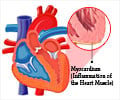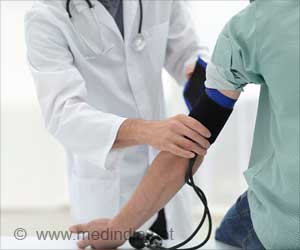People with untreated 'white coat hypertension' were twice as likely to die from heart disease, revealed research.

"Studies suggest that about one in five adults may have white coat hypertension. Our findings underscore the importance of identifying people with this condition," said the study's lead author Jordana B. Cohen, MD, MSCE, an assistant professor in the division of Renal-Electrolyte and Hypertension and a senior scholar in the Center for Clinical Epidemiology and Biostatistics. "We believe individuals with isolated in-office hypertension - those who are not taking blood pressure medication - should be closely monitored for transition to sustained hypertension, or elevated blood pressure both at home and the doctor's office."
High blood pressure, or hypertension, is a defined as a top reading of at least 130 or a bottom one of 80. The condition affects nearly a third of American adults and, if left untreated, increases one's risk for severe complications, including heart attack and stroke. To diagnose and manage the condition, recent hypertension guidelines strongly recommend out-of-office blood pressure monitoring, such as at-home monitoring and ambulatory blood pressure monitoring, which requires patients to wear a portable device that records blood pressure readings over a 24-hour period. However, providers have been slow to adopt this practice due, in part, to skepticism over the usefulness of screening for white coat hypertension given the inconsistent findings - from past studies - and uncertainty around its association with heart disease and death.
To identify the cardiovascular risks of white coat hypertension, the researchers conducted a meta-analysis of 27 studies, comprising more than 60,000 patients, that evaluated the health risks associated with the condition. They found that patients with untreated white coat hypertension had a 36 percent increased risk of heart disease, 33 percent increased risk of death and 109 percent increased risk of death from heart disease.
"Our findings support the pressing need for increased out-of-office blood pressure monitoring nationwide, as it's critical in the diagnosis and management of hypertension," Cohen said.
"Simultaneously, we advise individuals with untreated white coat hypertension to engage in lifestyle modifications, including smoking cessation, reduction in their alcohol intake, and making improvements to their diet and exercise regimens. We also caution providers not to over-treat individuals with white coat hypertension who are already on blood pressure medication, as this could lead to dangerously low blood pressures outside of the office and unnecessary side effects from medication."
Advertisement
This work was supported, in part, by a grant from the National Institutes of Health (K23-HL133843). Additional Penn authors on the study include Matthew G. Denker, Debbie L. Cohen and Raymond R. Townsend.
Advertisement















